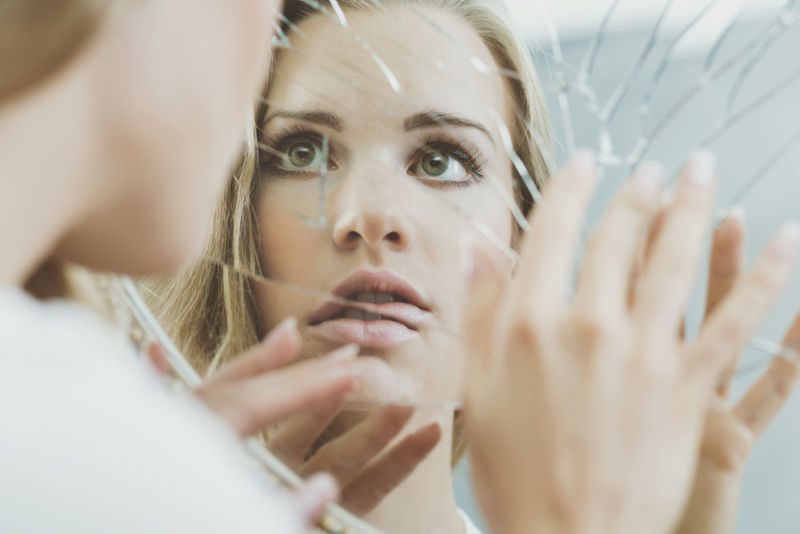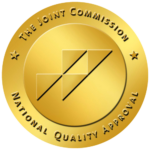Bipolar disorder is a complex mental illness affecting about 2.6% of American adults. It commonly develops during an individual’s mid-20s, causing manic and depressive symptoms. These symptoms can be unpredictable and challenging to manage, resulting in the use of drugs or alcohol to cope. However, this often causes additional symptoms and can lead to a co-occurring substance use disorder.
At Camelback Recovery in Phoenix, AZ, we offer comprehensive bipolar disorder treatment to help alleviate symptoms and build healthier coping mechanisms. Explore our dual-diagnosis treatment for bipolar disorder and addiction to get needed help.

What Is Bipolar Disorder?
Bipolar disorder is a manic-depressive illness characterized by intense mood swings that shift from extreme highs to lows. During emotional highs or manic episodes, individuals typically feel energetic, euphoric, and restless, while emotional lows, or depressive episodes, cause feelings of sadness, hopelessness, or emptiness. Some individuals may also experience hypomania, a less extreme form of mania.
Mood swings may occur once or multiple times a year, affecting sleep, behavior, judgment, and ability to focus. Bipolar disorder symptoms can also vary in intensity based on the type of disorder. There are three common types of bipolar disorder.
- Bipolar I disorder: You’ve experienced at least one manic episode and one major depressive episode. Some individuals also experience psychosis while manic.
- Bipolar II disorder: You’ve experienced at least one major depressive episode and one hypomania episode but never a manic episode.
- Cyclothymic disorder: You’ve experienced periods of hypomania and depressive symptoms for at least 2 years as an adult or 1 year as a child or adolescent.
The Link Between Bipolar Disorder and Addiction
People commonly use drugs or alcohol to manage bipolar symptoms, especially if they aren’t receiving treatment. During manic episodes, individuals are more likely to display poor judgment and engage in risky behaviors, including using drugs or alcohol. Additionally, they may use substances to cope with depressive symptoms and elevate their mood.
However, excessive substance abuse can cause overlapping symptoms requiring specialized care. People with co-occurring disorders usually undergo dual-diagnosis treatment.
Our Bipolar Disorder Treatment Approach
At Camelback Recovery, our bipolar disorder treatment center in Phoenix, AZ provides customized care for individuals struggling with co-occurring substance use and mental health disorders. Using a combination of medication and therapy, we can help you regulate your mood and establish healthier coping skills. Take a look at our unique treatment approach.
Personalized Care for Bipolar Disorder
Upon admission to our bipolar treatment center, you’ll undergo an assessment to determine diagnoses, severity of symptoms, and needed services. This information is used to develop a customized treatment plan, ensuring access to appropriate care. The goal of treatment is to help manage symptoms, overcome harmful habits, and learn healthy coping skills to sustain recovery.
Integrated Addiction Treatment Solutions
Because we offer dual-diagnosis treatment, our mental health services easily integrate into an addiction treatment program. This allows us to treat co-occurring disorders simultaneously, helping you successfully recover from both. Your customized recovery plan will document your unique situation, informing our medical professionals how to administer treatment as best as possible.
Evidence-Based Therapies and Techniques
When providing Bipolar Disorder Treatment, we use evidence-based therapies and techniques to help manage symptoms and explore the root cause of your substance abuse issues. Therapies we offer include:
We also offer psychiatric services if medications are needed to manage symptoms.

Bipolar Disorder Treatment Programs
Bipolar disorder affects everyone differently, which is why we offer various treatment options. At our location in Phoenix, AZ, we provide residential, outpatient, and partial hospitalization programs. See which option fits your needs.
Inpatient/Residential Treatment Program
Our residential treatment center provides 24-hour support and supervision in a safe environment free from harmful influences or distractions. This allows you to focus solely on recovery without worrying about external stressors.
The average stay for inpatient treatment is 30 days, but 60- and 90-day options are available if needed. During this time, you’ll attend therapy, support groups, and recovery support services and be around peers sharing similar struggles.
Intensive Outpatient Program (IOP)
During IOP treatment, you’ll travel to our rehab center 3 days per week for at least 3 hours per day to attend therapy, support groups, or additional counseling services. Outpatient treatment helps people receive care while maintaining jobs, relationships, and other obligations.
It can help you maintain independence and build confidence in your ability to stay sober and manage mental health symptoms. Some people choose to attend IOP after completing more intensive treatment.
Partial Hospitalization Program (PHP)
PHP treatment is an outpatient program that meets weekly for a few hours daily. It serves as a bridge between inpatient treatment and an IOP. People typically enter a PHP if they still require intensive treatment after residential rehab but don’t need 24-hour monitoring. It offers services like other treatment options, including therapy, life coaching, and relapse prevention training.
Why Choose Our Phoenix, AZ, Center for Bipolar Treatment?
Whether you’re just entering recovery or experiencing a relapse, Camelback Recovery in Phoenix, AZ, can help. By focusing on the individual, we meet people where they’re at to guide them to a better life. Here are some factors that set us apart.
Expert, Compassionate Staff
When you choose Camelback Recovery for bipolar and addiction treatment, you get access to a knowledgeable team committed to helping you through the recovery journey. Our licensed therapists, psychiatrists, and addiction specialists work closely with you to meet your needs and improve your overall well-being. They also make adjustments to treatment plans as needed.
Holistic Treatment and Wellness Focus
Our holistic treatment approach doesn’t just consider your physical needs but also your emotional, mental, and spiritual needs. We offer experiential therapies, including art therapy, to help you express emotions through creative outlets. This can help you better identify feelings or experiences influencing your thoughts and behaviors.
Insurance and Payment Options
We believe everyone who needs treatment should have access to it. This is why we accept most major insurance plans for coverage. Treatment costs vary depending on the plan, but we offer financing options and a sliding pay scale for housing.
Get Started With Treatment at Camelback Recovery Today
If you’ve been struggling with bipolar disorder and addiction, this is your sign to get help. Camelback Recovery in Phoenix, AZ, offers various mental health and substance abuse services to help you navigate a successful recovery. Contact Camelback Recovery for treatment today and start your journey to a more fulfilling life.


